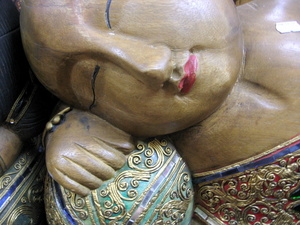The ear has three parts, the outer, middle, and inner ear. The outer ear is both the ear that we see, and the outer ear canal, a passage about 20 mm long which leads from the pinnate to the eardrum. The middle ear is bridged by three small connected bones called the hammer, anvil, and stirrup. The inner ear consists of two structures which contain membrane-like chambers filled with fluid
This article will discuss outer, middle and inner ear infections, you will learn how each one develops and the symptoms. You will also learn the causes for all three types of ear infections along with how you and your doctor can treat each type of ear infection.
Outer Ear Infections-
Infections of the outer ear canal take on two forms, one is a localized infection like a boil or absest, and the second is a generalized infection that affects the whole lining of the canal.
How It Develops-
An outer-ear infection will begin with itching and pain, that is often quite severe, focused in the visible ear and its canal.
Symptoms-
2 skin lining the canal will be red and swollen
3 may harbor some boils
4 copious, malodorous discharge from the ear
5 swollen membranes may cause temporary hearing loss
Causes-
Ear infections can occur after swimming- persistent, excessive moisture in the ear canal can make the canal more susceptible to infections. Having direct contact with polluted water from lakes and rivers can cause infection. A third cause of infections is scratching inside the ear to relieve itching or while attempting to remove wax.
Treatment-
You can take an aspirin and place a warm clean cotton pad or an electric heating pad over your ear to help relieve the pain until you can visit a doctor. Your doctor will look into your ear with an otoscope, and may take a sample of any pus. Then, the sample will be sent to a lab to see what caused the infection. The doctor may clean your ear with a suction device or a cotton tipped, probe. Usually this will relieve irritation and pain. You will have to gently clean the ear daily and use the prescriptions the doctor gives you. If the infection does not improve within three or four days your doctor may prescribe an antibiotic that is very effective against the particular organisms that are causing the infection. Your doctor may also prescribe a painkiller if the pain is severe.
Chronic Middle Ear Infection-
A chronic ear infection is slow, relentless, and can cause permanent damage.
Causes-
Chronic infection is often the result of an untreated ear infection in childhood. Either the infection never completely cleared up, or it eventually cleared up but left a site that is particularly susceptible to subsequent infection. The pus that is produced continually from the chronic infection will eventually cause a hole to form in the eardrum, and often will eventually cause a hole to form in the eardrum, and often will damage or destroy the small bones of the middle ear.
Symptoms-
1 Gray or yellowish pus will seep from the ear occasionally
2 pain
3 some amount of hearing loss
4 eardrum may rupture causing pus to drain
Treatment-
Keep the ear clean and dry, wiping away any discharge with a cotton swab until you can see your doctor. Your doctor will clean the ear, and prescribe an antibiotic in tablet form along with ear drops that contain antibiotics. The treatments purpose is to eliminate the infection and to prevent any discharge for three months.
Inner Ear Infection-
These are usually secondary to other bacterial infections and are called labyrinthits. These infections occur when bacteria invades the canal and other inner ear structures. This type of infection is very serious and can result in permanent hearing loss, meningitis, and mastoiditis.
Symptoms-
1severe dizziness (vertigo)
2 nausea
3 vomiting
4 possible face paralyses
Treatment-
You will be told to rest quietly in bed for several days. Your doctor will prescribe a tranquilizer and a drug that combats nausea. Most cases will clear up within one to three weeks.
Note:
When antibiotics are prescribed, make sure to take the full course of treatment! Even if symptoms improve in a day or so. If you stop too soon, you will increase your risk of a recurrence with an antibiotic-resistant organism that is much harder to treat.
As the organs of hearing and balance, your ears play a role in every activity in your life. Because of the ears complex network of nerves, and its close proximity to nasal and throat passages, the organs are very sensitive to pain and very vulnerable to infections. This article discussed outer, middle, and inner ear infections. You learned the caused and the symptoms of each type of ear infection. You also learned how you and your doctor can treat each type of ear infection.
Sources:
Preventions Giant Book Of Health Facts
Readers Digest Great Health Hints

